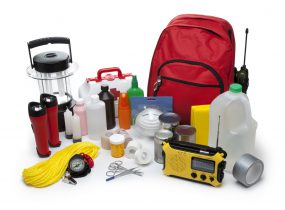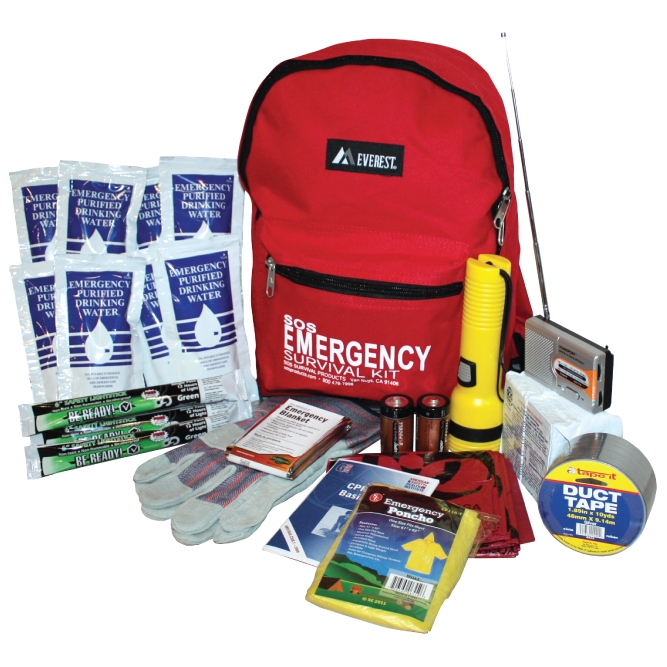Stay Safe with Emergency Preparedness: Expert Tips and Methods
Stay Safe with Emergency Preparedness: Expert Tips and Methods
Blog Article
Just How to Establish an Extensive Emergency Readiness Strategy
In the realm of preparedness, establishing a detailed emergency strategy is not simply a task to mark off a list; it is a necessary foundation of any company or individual's strength strategy. From all-natural disasters to unanticipated dilemmas, the capacity to expect, mitigate, and react efficiently can imply the difference between turmoil and control. By thoroughly crafting a plan that attends to numerous aspects of emergency management, including danger analysis, interaction methods, source allocation, and critical decision-making, one can lay a solid foundation for guarding possessions, lives, and procedures. Nonetheless, real efficacy of such a plan exists not only in its development but also in its recurring upkeep and adjustment to evolving risks and difficulties.
Significance of Emergency Preparedness
Emergency readiness is essential for reducing possible risks and making certain the security of neighborhoods and people. In today's world, where natural calamities, public health and wellness situations, and other emergency situations can strike without warning, being prepared can make a significant difference in minimizing the impact of these events. By having a well-balanced emergency situation preparedness strategy in place, people and organizations can react successfully, shield lives, and decrease residential property damages.
One of the primary reasons emergency situation preparedness is necessary is its role in conserving lives. When emergency situations occur, having a strategy that describes clear treatments for discharge, emergency, and interaction action can help individuals act quickly and emphatically. This can avoid injuries and deaths by making sure that people know what actions to take to stay secure
Furthermore, emergency readiness enhances the durability of areas. By promoting a society of readiness and preparation for various circumstances, communities can get better more quickly from disasters and disruptions. This durability is crucial for keeping security, continuity of procedures, and overall well-being when faced with hardship.
Assessing Possible Threats
Taking into consideration the significance of being gotten ready for unpredicted events, the initial action in establishing a reliable emergency preparedness strategy includes thoroughly reviewing and assessing potential threats. This analysis calls for a thorough testimonial of all feasible threats that could influence the company, considering factors such as location, market, and historic information on incidents. By identifying these dangers, organizations can prioritize their preparedness initiatives and designate resources effectively to reduce one of the most considerable risks.
Common dangers that organizations might encounter include natural calamities like floodings, earthquakes, or typhoons, technical hazards such as power blackouts or data breaches, in addition to human-caused risks like crashes or deliberate acts of physical violence. Carrying out a risk evaluation also includes considering the possible impact of these occasions on the organization's operations, staff members, clients, and online reputation. By carrying out an extensive threat evaluation, companies can develop customized emergency action strategies that address their details vulnerabilities and guarantee reliable preparedness for any type of potential situation.
Producing an Interaction Strategy
Establishing a clear and detailed communication strategy is necessary for efficient emergency readiness within organizations. In times of dilemma, communication plays a critical function in making certain the safety and wellness of workers, stakeholders, and the area. A well-thought-out communication plan must lay out clear lines of communication, designate crucial employees in charge of interaction tasks, and establish procedures for distributing info promptly and accurately.
One key element of producing an interaction plan is determining alternative and key communication channels (EMERGENCY PREPAREDNESS). These can include e-mail, message messaging, phone trees, social media sites platforms, and public address systems. It is critical to make certain that these networks are dependable, available, and routinely examined to guarantee their performance during emergencies

Building an Emergency Situation Package
Given the essential significance of readiness in times of situation, a vital component that organizations should address is the facility of an emergency situation kit. An emergency situation set works as an important resource that can help minimize the influence of unforeseen events, making certain that essential supplies and tools are conveniently offered when needed most. When setting up an emergency situation package, it is vital to think about the certain requirements and scenarios of the company. Fundamental products such as water, non-perishable food, emergency treatment supplies, flashlights, batteries, and a battery-powered radio are fundamental components of any kind of emergency situation package. Furthermore, organizations ought to include important documents, such as call checklists, insurance policy info, and emergency action plans, in waterproof containers within the set. Consistently examining and upgrading the components of the emergency kit is critical to make certain that materials are useful and current. By proactively maintaining an emergency situation and building package, organizations can enhance their preparedness to efficiently react to situations and secure their personnel and properties.
Establishing Evacuation Treatments
To ensure the security and organized discharge of employees during emergencies, organizations have to establish clear and efficient evacuation procedures. Discharge treatments need to encompass a range of potential situations, consisting of fires, all-natural calamities, or various other emergency situations that call for speedy evacuation.

Furthermore, companies should develop a system for accounting for all workers throughout an emptying to make certain that everybody has securely exited the properties. Interaction plays an important duty in evacuation procedures, with clear directions on just how to evacuate and when to do so. Regular evaluation and updating of emptying treatments based upon comments and transforming situations are vital to keeping the performance of see post the strategy.
Verdict
Finally, establishing a comprehensive emergency preparedness plan is important for making certain the safety and security and health of people in the event of a catastrophe (EMERGENCY PREPAREDNESS). By analyzing potential risks, developing a communication plan, developing an emergency package, and developing evacuation companies, treatments and individuals can be better geared up to respond efficiently to emergencies. It is essential to prioritize preparedness efforts to mitigate the impact of disasters and protect lives and building
In the world of readiness, creating a thorough emergency situation plan is not just a task to inspect off a checklist; it is a vital cornerstone of any type of company or individual's durability technique. When emergencies occur, having a plan that describes clear procedures for emptying, interaction, and emergency situation reaction can aid individuals act swiftly and emphatically. check over here. By performing a comprehensive danger evaluation, companies can create customized emergency situation feedback plans that address their certain susceptabilities and ensure efficient preparedness for any type of prospective crisis
Developing a clear and detailed interaction plan is vital for efficient emergency situation readiness within organizations. By evaluating prospective dangers, creating a communication plan, constructing an emergency situation package, and developing emptying companies, people and treatments can be much better outfitted to react effectively to emergencies.
Report this page